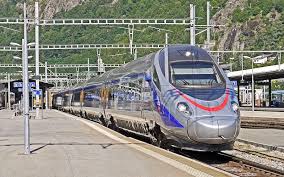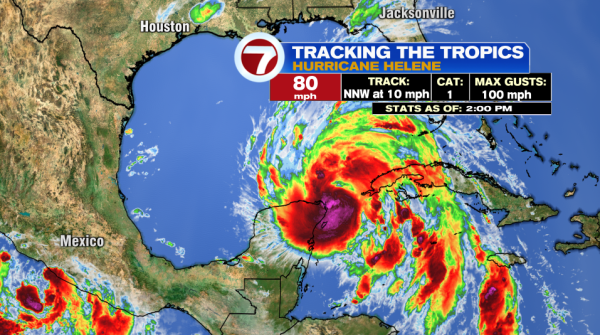Ethics of a Faster Future

Amtrak Train pulls into station to pick up eager passengers
The Green New Deal has received a lot of attention, good and bad since it’s introduction in 2019 by Representative Alexandria Ocasio-Cortez and Senator Edward Markey. One of its most popular items is the potential high speed rail system. It would range from the mountains to the prairies to the oceans white with foam. To dive deeper into the ethics of rail transportation, let’s focus on one of the largest travel oriented rail companies: Amtrak.
Amtrak’s first train departed from New York City en route to Philadelphia over 50 years ago on May 1st, 1971. The corporation was established by the Congressional Rail Passengers Service Act of 1970, signed into law by President Nixon. This relinquished the requirement that the nation’s railroads had to continue passenger service, and created an entirely new National Railroad Passenger Corporation that consolidated the 20 existing passenger railroads into one. Back then Amtrak had a total of 21 routes serving 43 states. Today the corporation serves nearly 87,000 passengers a day and over 31.7 million passengers a year via a national system exceeding 21,400 miles of routes connecting more than 500 destinations across 46 states, the District of Columbia and 3 Canadian provinces.
According to a statement by the corporation, “Amtrak embraces sustainability as a way to operate our passenger rail business. Our company-wide Sustainability Policy guides how we incorporate environmental, financial, and social considerations into our risk assessment processes and project outcomes.” A Sustainability Strategic Plan with 4 strategies including, reducing greenhouse gas emissions, energy use, diesel fuel use, and increasing the rate of recycling has already been put into effect in attempts to cut Amtrak’s carbon emissions down 40% by 2030. These actions exhibit that the administration is willing and dedicated to reaching a more sustainable practice hereafter. Amtrak aligns with the Anthropocentric philosophy, but shares ecocentric values, and displays a developmental attitude because, the corporations goal is to please customers with widespread and efficient transportation while also making necessary changes for improving their environmental impact
To truly understand whether a corporation has a positive outlook on sustainability you need to take a deep dive into the concrete facts and research about the company’s environmental habits. Habits are actions we repeat regularly without thinking, for a company to be sustainable it has to adopt and maintain better environmental practices. Then you, as an individual, can use that information to conclude if that business aligns with your personal moral principles. In 2017, pre covid travel restrictions, Amtrak’s total carbon dioxide emissions was 990,000 metric tons, which is a huge amount, except choosing to take a train cuts CO2 emissions by half compared to a plane. The reason being that the train is a large carbon emitter, but it carries a greater amount of passengers, as a result the emissions per capita are substantially lower. According to the FY2020 Amtrak Sustainability Report, Amtrak has reduced its greenhouse gas emissions by 31% YOY since 2010 and 14% YOY, with 803,008 tons in 2020 Compared to 934,038 tons in 2019.
Over consumption is a huge problem in the transportation industry. Recently, Amtrak invested $7.6 million for repairs and replacements at Penn Station, NY. It involved a project scope of removing, replacing, and installing new timber block ties and concrete, collecting and disposing general debris, and installing a safety construction barrier on the platform to protect passengers. Necessary materials like hot-rolled steel and track ballast, are all used to build train tracks. But the production of these materials harms the planet. Hot rolled steel is made out of large steel slabs or billets cast from hot liquid metal. The billets are then heated, to temperatures reaching over 1700°F. They are then flattened into a long sheet using a set of rollers. On average 1.9 tons of carbon dioxide are emitted for every ton of steel produced, according to the World Steel Association. Track ballast consists of crushed stone, washed gravel, black run gravel, and torpedo gravel. The construction industry accounts for 38% of carbon dioxide emissions. So enough of those resources need to be harvested and refined to cover 21,400 miles of routes. Based on this information, you can see that the interrelatedness of each industry accounts for more emissions than recorded by Amtrak data alone.
It is virtually impossible for a corporation as big and impactful as Amtrak to be zero waste. An article by theconversation says, Diesel trains use 5.2L of water per passenger-kilometer (pkm) and electric trains use the least, at 3.4L of water per pkm. Also the addition of washing and sanitizing bedding, other cloth materials, and cutlery used daily needs to be taken into account. To make your passenger experience more enjoyable, Amtrak offers 3 types of onboard dining experiences: traditional dining, flexible dining, acela dining, and a cafe. All including: breakfast, lunch, and dinner. Meals like steak, salmon, pasta, eggs, french toast, and more are all available. A study by the New York Times states that Amtrak lost more than $800 million on its food and beverage services over the last 10 years, predominantly because of waste.
Amtrak markets their sustainability with the AmtrakSustains campaign, including a hashtag on Facebook, Instagram, and Twitter. They also have a page on their website dedicated to the cause. On the page you can find lists of their environmental, social, and economic achievements, such as developing Amtrak’s first solar power purchase agreement contract in Washington, DC, and information like Amtrak is 46%more energy efficient than traveling by car and 34% more energy efficient than domestic air travel on a per-passenger-mile basis. They also showcase new policies and improvements the Amtrak team makes. Including plans for new energy efficient train models.
Despite a corporation claiming to be committed to sustainability and progress, more often than not, that’s not the case. Although unethical, big companies tend to gloss over the truth to appease the public. Luckily, Amtrak appears to be staying true to their word. Outside resources such as Travel Pluse and spokesman, had good things to say with a few critiques. Some examples being: Amtrak’s Los Angeles team worked with local food rescue partner, Food Finders, to collect perishable items, linens and towels to donate to centers in several major metropolitan areas to prevent perishable food from becoming waste. And Seth Wynes, a postdoctoral researcher at Concordia University in Montreal, backed up the fact that trains are more environmentally friendly than cars by providing evidence that driving a fuel-efficient 2014 Ford Focus would emit more than double the greenhouse gas then taking a train and taking a plane would emit nearly 60% more greenhouse gas than an Amtrak trip. Although he also added that countries like Europe and Asia use more electric power coming from climate-friendly sources, while the switch to electric in the US and Canada has been slow with the amount of diesel use is still above electric.
In conclusion, although Amtrak is contributing to development and infrastructure they recognize the impact they, as a corporation, have on the well being of our planet and are taking the necessary steps to reduce their ecological footprint. By working to provide an accessible and sustainable replacement for environmentally harmful travel methods, so that collectively society can reduce our ecological footprint together.





